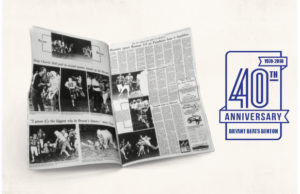Protect Your Valuables with a Personal Articles Policy

Get coverage beyond your homeowners or renters policy to replace your valuable items. A Personal Articles Policy could give you worldwide coverage for items not protected by other policies.
The Personal Articles Policy offers many features and benefits:
Broad Coverage – The PAP provides all risk coverage, subject to few limitations and exclusions. This means it provides broad coverage, often with no deductible, for theft and accidental direct physical loss (ADPL) to the covered property at home and while traveling anywhere in the world (Fine Arts are only covered in the U.S.). If it is not excluded, then it is covered. These personal items are listed in the schedule in the policy and a coverage amount is assigned to each item. In a few cases, blanket coverage is available for an entire class of property, such as baseball and sports cards, wine collections, etc.
Value Established Prior to Loss – The value of items is established up front when the policy is written; so if there should be a loss, it makes claim handling much smoother for the customer.
– Broader coverage can be provided – Sometimes the homeowners policy may not adequately cover some items due to coverage limits on items, and the PAP can provide that extra, broader coverage.
Minimal Costs and Lower Deductibles – The cost of the PAP is reasonable and can offer low or no deductibles at all.
A Personal Articles Policy May Cover:
– Bicycles (such as racing bikes and electronic assist bicycles)
– Cameras
– Collectibles (such as dolls, model trains, sports cards, comic books, and stamp and coin collections)
– Computer equipment and software (personal use only)
– Fine art (such as paintings and sculptures)
– Firearms
– Furs
– Hearing aids and medical devices (such as hearing implants and insulin pumps)
– Jewelry
– Musical instruments
– Prosthetic devices (such as artificial eyes and limbs)
– Silverware/goldware
– Sports equipment
– Sports, leisure, and powersport items (such as fishing equipment, bicycles, and golf clubs)
Appraisal & Bill of Sale Requirements:
Insuring property for its true value is important. A bill of sale or appraisal not more than two years old will be considered “current”. A bill of sale helps to document the item’s purchase price. The bill of sale should include the description of the item, the purchase date, and the name, address and phone number of the place of purchase. It may or may not have the sales person’s signature.
An appraisal is a written document that provides both a description and a valuation of an item, and is typically written by an appraiser familiar with evaluating items and determining values. Good documentation is important, especially should there be a loss or claim on the items at some time. It is required that an appraisal have the buyer’s or owner’s name and address, date the appraisal was issued and signature and/or name of the appraiser, and a full description of each item being insured. This is standard appraisal practice.
If an appraisal or bill of sale is not provided, a detailed description is needed and photos of the item(s) being insured are desirable, if possible. An experienced underwriter should review the coverage request.
Optional Personal Articles Policy Coverage:
Broad Pair and Set Coverage – You will be covered for the full amount needed to replace an item of jewelry that may be part of a pair or set. For example, a pair of earrings would qualify for this coverage.
Inflation Coverage – The amount of coverage is automatically adjusted annually based on the Consumer Product inflation index. Valuable items should be professionally reappraised regularly.
Wedding Present Coverage – In addition to coverage for your engagement and wedding rings, we can cover your wedding gifts as well. Adding the Wedding Gift endorsement provides temporary coverage (before and up to 90 days after your wedding) to protect your gifts. Refer to the policy for a complete description of the Losses Not Insured.









0 comments